The site of this Wetherspoon pub has been occupied by an inn since the 15th century. By c1520, it was known as the King’s Head, retaining that name until it was rebuilt in the 1880s. The County Hotel was, itself, a change of name some time during the 1880s or 1890s. Before then, it was the King’s Head and Brewery. The King’s Head was an inn with a long pedigree. In 1623, John Taylor, the ‘Water Poet’, demonstrated that the Avon could be made navigable by rowing his boat from London. On reaching Fisherton Bridge, he lodged at the King’s Head Inn.
Text about The King’s Head Inn.
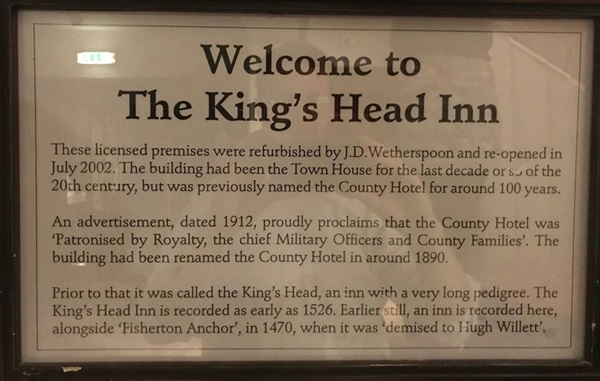
The text reads: These licensed premises were refurbished by J D Wetherspoon and reopened in July 2002. The building had been the Town House for the last decade or so of the 20th century, but was previously named the County Hotel for around 100 years.
An advertisement, dated 1912, proudly proclaims that the County Hotel was ‘Patronised by Royalty, the chief Military Officers and County Families’. The building had been renamed the County Hotel in around 1890.
Prior to that it was called the King’s Head, an inn with a very long pedigree. The King’s Head Inn is recorded as early as 1526. Earlier still, an inn is recorded here, alongside Fisherton Anchor, in 140, when it was demised to Hugh Willett.
Prints and text about Salisbury’s new town.
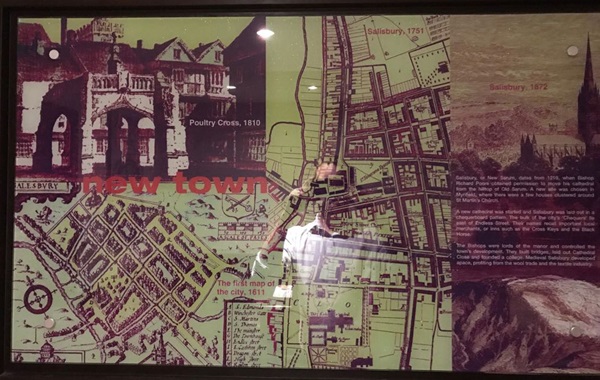
The text reads: Salisbury, or New Sarum, dates from 1219, when Bishop Richard Poore obtained permission to move his cathedral from the hilltop of Old Sarum. A new site was chosen in Myrifield, where there were a few houses clustered around St Martin’s Church.
A new cathedral was started and Salisbury was laid out in a chequerboard pattern. The bulk of the city’s ‘Chequers’ lie east of Endless Street. Their names recall important local merchants, or inns such as the Cross Keys and the Black Horse.
The bishops were lords of the manor and controlled the town’s development. They built bridges, laid out Cathedral Close and founded a college. Medieval Salisbury developed apace, profiting from the wool trade and the textile industry.
Prints and text about the cathedral.
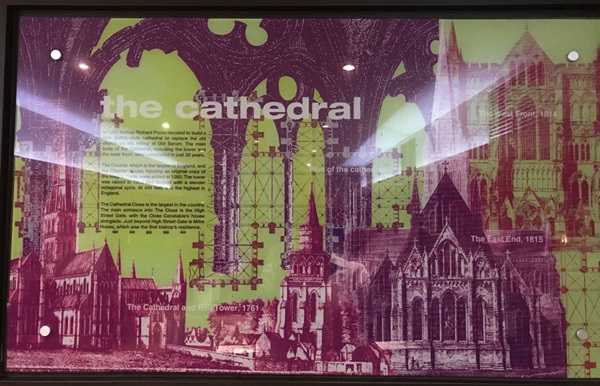
The text reads: In 1220 Bishop Richard Poore decided to build a new Gothic-style cathedral to replace the old church on the hilltop at Old Sarum. The main body of the cathedral, including the tower and the west front, were completed in just 38 years.
The Cloister, which is the largest in England, and the Chapter House, housing an original copy of the Magna Carta, were added in 1280. The tower was raised in 1313 and topped with a slender octagonal spire. At 404 feet, it is the highest in England.
The Cathedral Close is the largest in the country. The main entrance into the close is the High Street Gate, with the close constable’s house alongside. Just beyond High Street Gate is Mitre House, which was the first bishop’s residence.
Prints and text about Stonehenge.
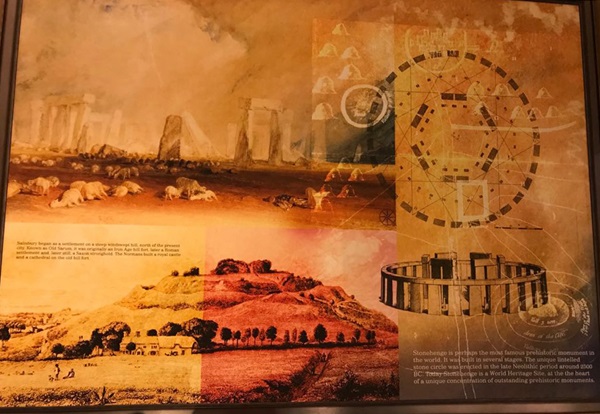
The text reads: Stonehenge is perhaps the most famous prehistoric monument in the world. It was built in several stages. The unique lintelled stone circle was erected in the late Neolithic period around 2500BC. Today, Stonehenge is a World Heritage Site, at the heart of a unique concentration of outstanding prehistoric monuments.
Illustrations and text about JMW Turner.
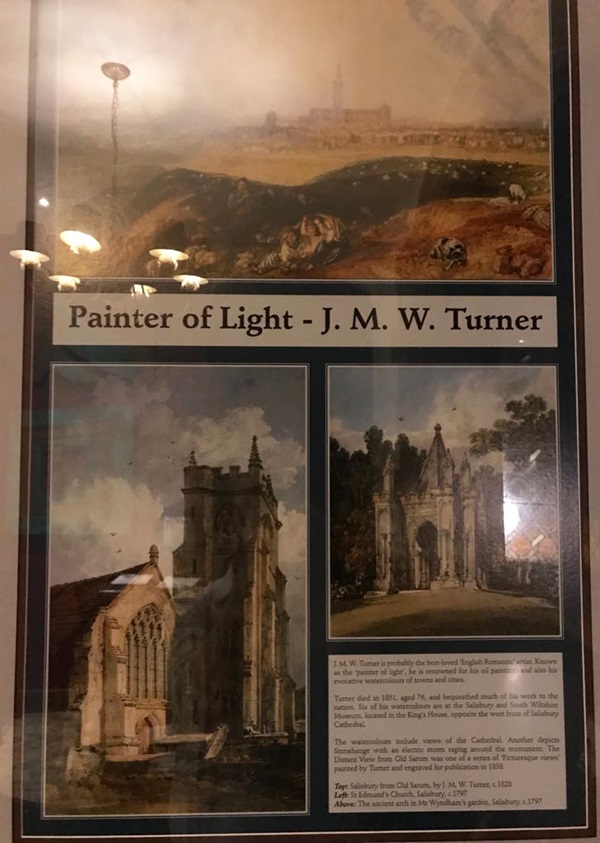
The text reads: JMW Turner is probably the best loved English Romantic artist. Known as the ‘painter of light’, he is renowned for his oil paintings and also his evocative watercolours of towns and cities.
Turner died in 1851, aged 76, and bequeathed much of his work to the nation. Six of his watercolours are at the Salisbury and South Wiltshire Museum, located in the King’s House, opposite the west front of Salisbury Cathedral.
The watercolours include views of the cathedral. Another depicts Stonehenge with an electric storm raging around the monument. The Distant View from Old Sarum was one of a series of picturesque views painted by Turner and engraved for publication in 1838.
Top: Salisbury from Old Sarum, by JMW Turner, c1828
Left: St Edmund’s Church, Salisbury, c1797
Above: The ancient arch in Mr Wyndham’s garden, Salisbury, c1797.
An illustration of The King’s Head Inn.
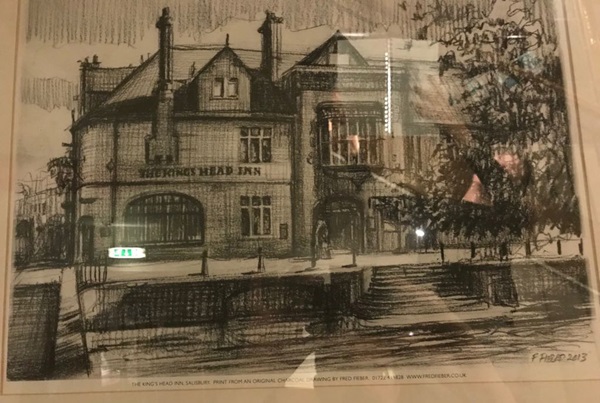
External photograph of the building – main entrance.

If you have information on the history of this pub, then we’d like you to share it with us. Please e-mail all information to: pubhistories@jdwetherspoon.co.uk